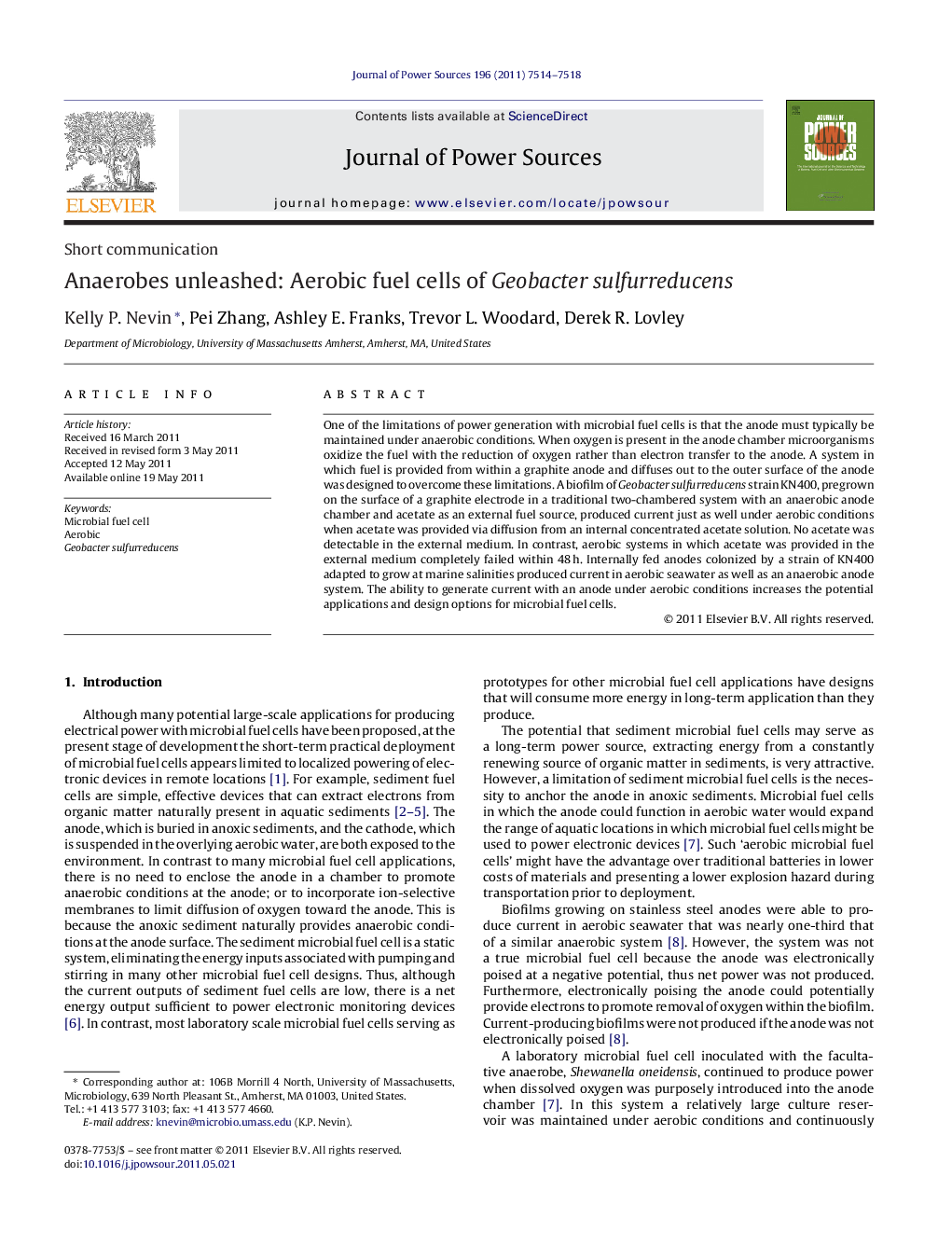| Article ID | Journal | Published Year | Pages | File Type |
|---|---|---|---|---|
| 1293368 | Journal of Power Sources | 2011 | 5 Pages |
One of the limitations of power generation with microbial fuel cells is that the anode must typically be maintained under anaerobic conditions. When oxygen is present in the anode chamber microorganisms oxidize the fuel with the reduction of oxygen rather than electron transfer to the anode. A system in which fuel is provided from within a graphite anode and diffuses out to the outer surface of the anode was designed to overcome these limitations. A biofilm of Geobacter sulfurreducens strain KN400, pregrown on the surface of a graphite electrode in a traditional two-chambered system with an anaerobic anode chamber and acetate as an external fuel source, produced current just as well under aerobic conditions when acetate was provided via diffusion from an internal concentrated acetate solution. No acetate was detectable in the external medium. In contrast, aerobic systems in which acetate was provided in the external medium completely failed within 48 h. Internally fed anodes colonized by a strain of KN400 adapted to grow at marine salinities produced current in aerobic seawater as well as an anaerobic anode system. The ability to generate current with an anode under aerobic conditions increases the potential applications and design options for microbial fuel cells.
► With a new configuration, microbial fuel cells (MFCs) can become 100% aerobic. ► 100% aerobic MFCs will allow for floating and/or untethered applications. ► 100% aerobic MFCs produce as much power as their anaerobic/aerobic counterparts.
